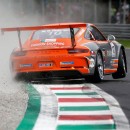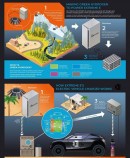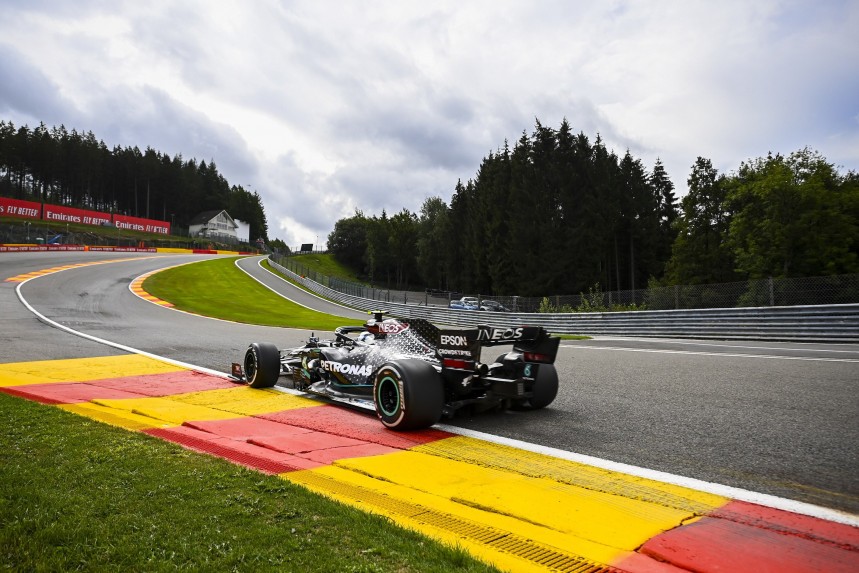While the oil giant did not explain if the fuel will be mandatory for all teams or just for some classes, they did specify that it should bring an immediate reduction of at least 65 percent of racing cars' carbon emissions.
The new type of racing fuel is set to meet the latest FIA regulations, and it is supposed to meet the requirements of all car brands involved in the sport.
What is this new fuel made from? Well, it is mostly composed of residues from the French wine industry. The residues include wine lees (also known as wine dregs), grape pomace, and other byproducts of the winemaking process.
Once these residues are collected, they get sent to a refinery for processing along with circular-economy-sourced ETBE, which is short for Ethyl tertiary-butyl ether. The latter is a gasoline additive that is superior to ethanol because it prevents the absorption of moisture and the evaporation of the fuel, which is one of the causes of smog.
The resulting fuel, Excellium Racing 100, is an advanced ethanol fuel, also called bioethanol, which is a sustainable fuel because it comes from by-products of the agricultural industry. It does not need dedicated crops, which would increase the price of those crops, and only works with residues that are normally discarded. On a sidenote, other companies have made fuel from whisky residue.
Several steps are required to make the new type of fuel before it is ready to blend with ETBE, and then with other performance additives. While Total Energies does not specify this, the resulting fuel has 100 in its name, which would be a reasonable octane rating for such fuel, if not even higher.
At the same time, IndyCar employs a racing fuel that is 85 percent ethanol, and just 15% gasoline. The blend is commonly labeled E85, and it is also a kind of fuel that can be had at the pump by the layperson, but not everywhere.
At this point, it is worth noting that E10 fuel, which means gasoline with a 10 percent ethanol content, is not everywhere, and that it may damage older cars, especially those manufactured before 2002. But your best bet on that is to check the owner's manual or at least the fuel cap to see the right octane rating and type of fuel used by your vehicle.
So do not fill up with E10 in hopes of getting racecar levels of performance from a stock engine. If your car supports it, the engine should operate the same as it did before E10. Most service stations provide E5 gasoline across the world, so there is a big chance that you have already driven or ridden in a vehicle that was operating on that blend of fuel.
The new type of sustainable fuel is just one of the proposed solutions for the future of motorsport. Toyota has experimented with hydrogen for a Corolla racecar, while Audi and other manufacturers have already made synthetic fuels that work with regular cars. Toyota's hydrogen Corolla burns liquefied gas, so it still operates with internal combustion instead of a fuel cell that generates electricity for its battery and electric motors.
Porsche is also experimenting with sustainable fuels, this time with the oil company ExxonMobil. The German marque employed a low-carbon fuel in some of the models that race in the Porsche Supercup this season. In the case of the product dubbed eFuel, it is made using sustainably sourced hydrogen and captured carbon dioxide.
So, instead of natural gas-sourced hydrogen, eFuel uses hydrogen obtained through electrolysis, which is powered by wind energy. That source of energy is renewable, and so is the source of hydrogen, which makes the process sustainable.
With captured carbon dioxide from the atmosphere, Exxon and Porsche claim the new fuel can cut greenhouse gas emissions by up to 85 percent compared to current standards. A deal producing a batch of about 35,000 gallons (ca. 132,489 l) has already been announced. It is unclear if the two companies intend to market the new type of fuel to regular customers, but it appears that it is just a trial run for the moment.
In the case of the eFuel, we do observe a slight issue, as it is only made in Chile, and it must then be transported across the Globe to wherever the Porsche Supercup races will take place. That is the least sustainable part of the process, but it is necessary now since there is only one place where it is obtained sustainably.
The solution to the less sustainable part of the eFuel equation is simple — turning the new low-carbon fuel into a reality for consumers worldwide. The move has the potential to reduce the dependence on fossil fuels, while also offering a lower CO2 impact of each drop of fuel used by cars, including those racing in the Porsche Supercup. Once it is manufactured across the globe, the least sustainable part, shipping the fuel, would not be required anymore.
Things do look more sustainable than previously thought, right? Well, there is a form of motorsport that has gone beyond. It is called Extreme E, and it transports all racecars with the same ship from one event to the other. The racing division that is in its maiden season also uses electric vehicles that are charged from hydrogen-powered fuel cell generators, and the hydrogen itself is sourced sustainably.
The founders of the series have also limited team member numbers, and each place they visit for an X Prix will get a project set up with specialists after the race is over. Each project is sustainable development in the isolated area. The series also focuses on leaving each place cleaner than they found it and claims to leave no trace of its presence in an area.
Formula 1 calculated that 45 percent of its total carbon emissions come from moving freight around the world by road, air, and sea.
The value was estimated back in 2018, and its emissions were calculated at 250,000 tons of carbon dioxide. The race cars themselves only emitted 0.7 percent of the emissions.
The other sad news? The air travel emissions generated by Formula 1 fans also add up to a sizeable quantity, unfortunately, impossible to estimate since nobody keeps track of the route and carbon emissions of a fan that arrives at a track for an event.
Extreme E has handled this issue by banning spectators from events unless they live near the place where their events take place, which happens to be in remote areas of the world, far from rally stages or traditional racetracks.
Fortunately, fans can watch every race online through a quality broadcast, so drivers do not have to pick litter from grandstands like Sebastian Vettel did, but they do it anyway, by picking up trash from the beach.















